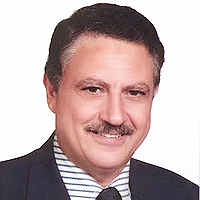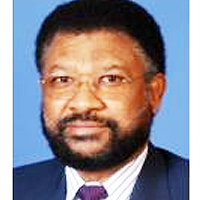Coronaviruses have reached at Pre-elimination Stage with Nine Amino Acid Spike Deletions and Forty-nine Nucleotide 3’-UTR Deletions
Published on: 17th September, 2024
Background: Human 30kb coronaviruses entered through the ACE-2 receptors causing fibrosis of the lungs and causing six million deaths worldwide. Here, we have investigated the mutations, deletions and insertions of the recent JN.1 omicron coronaviruses to demonstrate that coronaviruses have reached the pre-elimination stage. Methods: We multi-aligned the genomes of recent JN.1 variants using NCBI Virus Portal and CLUSTAL-Omega. The spike proteins are multi-aligned using MultAlin software and CLUSTAL-Omega.Results: The 17MPLF spike insertion was confirmed to compensate 24LPP, 31S, 69HV, 145Y, 211N and 483V deletions. The 49nt deletions in the 3’-UTR were found in 4997 JN.1 sequences although 26nt deletion was initiated previously in JN.1 as well as BA.5, BF.7, BQ.1 and XBB.1.5 omicron viruses. We first compare 3-D structures of spike proteins with or without 17MPLF four amino acids insertion and nine amino acids deletions using SWISS MODELLING. The JN.1 viruses caused a more stable trimeric spike involving Thr342, Lys436, Lys440, His441, Ser442, Gly443, Tyr445, Lys479, Ser489, Tyr490, Arg493, Pro494, Thr495, and Gln501 amino acids to interact with ACE-2 receptors. The FLiRT spike mutations were found in most KP.2 variants and other changes occurred at the NH2 terminus.Conclusion: We claimed that pre-death changes were initiated in JN.1 COVID-19 lineages and computer simulation showed that the Howard spike with 17MPLF spike insertion appeared more stable than the Oppentrons-spike without 17MPLF insertion. Surely, conflicts of COVID-19 spike sequences must be resolved.
Association Between Electrocardiographic Abnormalities and In-Hospital Adverse Outcome in COVID-19 Patients
Published on: 10th October, 2024
Background: SARS-CoV-2 is increasingly recognized for its cardiovascular complications. To address the knowledge gap in our region, this study investigated the relationship between electrocardiographic (ECG) features and in-hospital mortality among COVID-19 patients.Methods: A prospective cohort study was conducted involving 140 RT-PCR-confirmed COVID-19 patients at Dhaka Medical College Hospital from August 2021 to July 2022. Patients were divided into two groups based on ECG findings: normal (Group A) and abnormal (Group B). Clinical data and ECG parameters were analyzed using SPSS 24.0.Results: Patients with abnormal ECGs were older, more likely male, and presented with higher rates of dyspnea and palpitations. They were also at increased risk of severe COVID-19 and had longer hospital stays. In-hospital mortality was significantly higher in Group B (21.4% vs.4.3%). ST-T changes and atrial fibrillation were associated with increased mortality. Independent predictors of in-hospital mortality included ECG abnormalities and admission SpO₂ < 90%.Conclusion: ECG abnormalities are significantly associated with adverse outcomes in COVID-19 patients. Further large-scale studies are warranted to strengthen these findings.
Is Acupuncture Efficient for Treating Long COVID? Case Reports
Published on: 22nd October, 2024
Long COVID can be defined as a set of symptoms appearing more than 28 days after a documented acute COVID-19. Among them, extreme fatigue and troubles of moods are the most common. To verify that acupuncture can efficiently alleviate long COVID, a chronic disease partly escaping to other treatments, especially fatigue and troubles of mood. To collect data pertaining to the patients included in the study as described in the STROBE guideline. To diagnose the clinical conditions of the patients using the Nan jing in order to choose the meridian and the points to be toned or dispersed depending on the observation of tongue and pulse. Acupuncture can greatly improve the troubles of patients suffering from long COVID after a reduced number of sessions (1 to 4).
Understanding Burnout Rates for Clinicians and Physical Symptoms of Allostatic Load
Published on: 7th January, 2025
Burnout among clinicians is a pressing concern worldwide, manifesting as emotional exhaustion, depersonalization, and reduced professional efficacy. This article explores the intersection of burnout and allostatic load, the physiological burden resulting from chronic stress, to elucidate the consequences for healthcare providers. Burnout impacts clinicians’ mental and physical health, leading to compromised patient care, reduced job satisfaction, and increased attrition rates. A comparative analysis of recent scholarly works reveals converging evidence on systemic contributors such as excessive workloads, inadequate support systems, and organizational inefficiencies, further compounded by individual vulnerabilities like lack of resilience. These challenges have been exacerbated by the COVID-19 pandemic, which has significantly increased stress levels among healthcare professionals globally. This article synthesizes insights from studies conducted between 2020 and 2024, emphasizing the need for holistic approaches to mitigate burnout. It highlights the physiological underpinnings of allostatic load, including chronic dysregulation of stress-response systems that predispose clinicians to adverse health outcomes like cardiovascular diseases, immune dysfunction, and mental health disorders. To address these issues, the article proposes a multidimensional strategy encompassing organizational reforms, evidence-based interventions, and policy advocacy. Recommendations include reducing administrative burdens, fostering supportive work environments, and integrating wellness programs targeting both systemic and individual stressors. Limitations and directions for future research emphasize the importance of inclusive, longitudinal studies focusing on diverse populations to develop tailored solutions. This comprehensive approach aims to enhance clinician well-being and improve healthcare outcomes globally.
Dengue Epidemic during COVID-19 Pandemic: Clinical and Molecular Characterization – A Study from Western Rajasthan
Published on: 1st April, 2025
The concurrent emergence of dengue fever and the COVID-19 pandemic posed significant challenges to India’s healthcare system, particularly in Western Rajasthan, a region characterized by its arid climate and unique socio-demographic conditions. This study aimed to investigate the clinical and molecular characteristics of dengue during the COVID-19 pandemic, focusing on trends, diagnostic challenges, and serotype distribution. Conducted at Dr. S.N. Medical College, Jodhpur, in 2021, the study included 550 dengue-positive patients confirmed via rapid diagnostic tests and further analyzed using Dengue NS1 antigen and IgM antibody ELISA. Molecular characterization was performed using RT-PCR for serotyping.The results revealed a male predominance (72.36%) and a higher incidence in the 21–30-year age group (39.09%). Urban areas accounted for 67.73% of cases, with significant NS1 and IgM positivity (p = 0.042 and p = 0.004, respectively). Most cases (86.91%) were managed outpatient, though IgM positivity was significantly higher among hospitalized patients (19.19%, p < 0.001), indicating severe or prolonged infections. Platelet counts were above 100,000/mm³ in 86.91% of cases, with only 0.37% showing critically low counts (< 20,000/mm³). Seasonal analysis showed a peak in October (n = 325), correlating with post-monsoon vector breeding. Serotyping identified DENV2 as the dominant strain (97.42%), associated with severe dengue manifestations, including Dengue Haemorrhagic Fever (DHF).The study highlights the dual burden of dengue and COVID-19, emphasizing the need for enhanced vector control, improved diagnostic strategies and public health interventions during overlapping outbreaks. The predominance of DENV2 underscores the importance of serotype-specific surveillance and preparedness to mitigate future dengue epidemics in the region.
Post-COVID Pulmonary Fibrosis: Pathophysiological Mechanisms, Diagnostic Tools, and Emerging Therapies
Published on: 9th May, 2025
OCLC Number/Unique Identifier: COVID-19; Pulmonary fibrosis; Antifibrotics; Lung
Post-COVID pulmonary fibrosis has emerged as a significant long-term complication among survivors of severe SARS-CoV-2 infection. This review highlights the underlying pathophysiology, diagnostic modalities, and recent advances in the diagnosis and management of post-COVID pulmonary fibrosis. As global cases of COVID-19 continue to evolve, understanding and addressing this emerging chronic respiratory condition is critical for long-term patient care.
The Color of Diseases and Herbs-chromatic Illustrating the Yin-yang Regulation Theory in Traditional Chinese Medicine
Published on: 9th May, 2025
Traditional Chinese medicine (TCM) has been used to serve people since antiquity in China, and still has an important role in today’s healthcare. As the outbreak of coronavirus disease 2019 (COVID-19) globally, TCM has played an important role in the fight against COVID-19 in China and other countries. However, scientists outside China doubted TCM. The philosophy of TCM in the description of diseases and the use of herbal medicines is difficult to understand for Western scientists. This article explains the philosophy of TCM using chromatic analogies to make it easily understandable and visually intuitive.
Telemedicine on Earth can learn from Spaceflight
Published on: 15th July, 2025
Telemedicine has become widely used, primarily following or during the COVID pandemic.
However, it was used a long time ago in specific cases, like submarines and space. Telemedicine has been developed to facilitate diagnosis and treatment in areas without physicians, either because the area is isolated without a medical doctor (as in submarines and space) or because we need expertise.
This article is a review using studies selected via PubMed to collect generic knowledge on some technical details on both sides: Earth and Space, where telemedicine activity is regularly provided. The goal was to compare tools, data collected, and ways of improvement in each area. As experienced on both sides, indeed, the author has already worked in the spaceflight area with astronauts as well as doing teleconsultations with patients nowadays, which allows us to see how we could improve the way we are doing teleconsultation on Earth by teaching the users as done with the astronauts in the pre-flight period. It seems telemedicine will still be mandatory for a while because as seen in many countries even out of the scope of isolated area (or very difficult to be accessed (like mountains, desert …), more and more small cities and even bigger are lacking general practitioner (GP) as well as some specialists. Taking into account the time needed to have a functional doctor (for a GP mainly 8 years and for specialists longer, up to 12 years), telemedicine should improve and take a real place in the health system.
This review gives a few definitions, also the term telehealth or e-health is widely used. It refers to the use of an internet communication system to transmit data, receive data, communicate in real time, and guide and provide healthcare services to the patient remotely.
Improvements in technologies have mainly been done for Earth applications, and tools are becoming smaller and more resistant. The different purposes of using telemedicine are increasing nowadays, and it is not used only because of a lack of physicians but to teach remotely and avoid travel, as well as to have direct access /advice with a specialist. We can find a lot of reasons to use it.
Living in space is a real challenge for the human body used to gravity. As explained in a lot of reviews, the body in space loses bone, muscle, and has changes in heart volume and excitability. All the body systems will suffer from microgravity. Other factors impacting the body in space are the high level of ionized radiation, plus isolation. This is why, since the beginning of space flight, the so-called flight surgeon (more GP of the astronaut than a surgeon) is using telemedicine with the astronauts to prevent disease and, in case a medical event happens, to help the astronaut receive a diagnosis and efficient treatment. The actual ISS, International Space Station, allows real-time communication with the astronauts. This will be used for direct discussion or conferences to check the medical/psychological/fitness status. In other cases, remote access can always be done to communicate pictures or movies to provide advice on health or science. Furthermore, some medical tests will be done to guide the astronauts because some tools need real expertise to be interpreted correctly. In that case, eye exam is a good example: an astronaut uses devices following the recommendation of the specialist based on the NASA Console in Houston.
Of course, new improvements are needed to facilitate the next challenges of spaceflight, also going a step further beyond LEO (Low Earth Orbit), like doing an interplanetary trip and going to Mars. In that next scenario, to allow the mission where the Earth will not be seen anymore, when the real-time exchange will not be feasible, a new autonomy of the astronauts will be required.
As on Earth, space with all technologies like satellite is not only used as for direct health care facility with the astronauts but also in a more preventive way. It is possible to follow changes on the ground, climate changes too, as a witness to a possible new epidemic, and another specific use is to help in locating people.
Finally, we see how the way telemedicine is done in space could help improve telemedicine on the ground. First of all, we could improve telemedicine in many ways on Earth for classical consultation by increasing the utilization of simple tools like otoscope and… more in that case we need to train the patient like the astronauts are trained on ground before flying, this has a huge positive effect in allowing easier diagnostic and then better treatment for example when good pictures are provided.
The new tools as Artificial Intelligence (AI) or Virtual Reality (VR), on trial if needed for long-duration missions and specifically for missions beyond low Earth orbit, should be beneficial as well on Earth.
Maybe the big challenge for Earth’s Telemedicine is increasing the trust in practitioners who are still convinced that this way of providing medicine could be a competitor, and for that reason, they are reluctant to use it.
Nowadays, it should become more and more obvious that we need to work on some specific weak points, like security, training in using tools to make sure telemedicine is efficient and useful, where we have a lack of physicians.
Neurocognitive Effects of Prolonged Virtual Consultation (Zoom Fatigue) in Clinicians
Published on: 6th October, 2025
With the rapid shift to telemedicine during the COVID-19 pandemic, clinicians have faced unprecedented demands in adapting to prolonged virtual consultations. This has given rise to “Zoom fatigue,” a form of mental and emotional exhaustion associated with extended video-based interactions. While the Zoom Exhaustion and Fatigue Scale (ZEFS) has been widely applied in studies involving students and office workers, there is limited research on its relevance to clinicians. Physicians, in particular, often conduct hours of uninterrupted virtual patient care, which can potentially lead to significant neurocognitive strain. This study explores the impact of prolonged virtual consultations on clinician well-being, employing ZEFS alongside the Depression, Anxiety, and Stress Scale (DASS-21) and Satisfaction with Life Scale (SWLS) to assess emotional and cognitive outcomes. Findings suggest that the increased cognitive load, reduced non-verbal communication, and digital interface stress contribute to higher levels of fatigue, anxiety, and dissatisfaction, highlighting the urgent need for systemic support and ergonomic telehealth practices.




